How to insert images in Zoho Writer
Overview
Images help you enhance your content visually and support your ideas more effectively. Zoho Writer allows you to insert images from multiple sources including your device, online libraries, and connected accounts.
Prerequisites
- Ensure you have the rights or license to use the image.
- For importing from Google Photos or Flickr, authentication is required.
Steps
How to insert an image
Insert using the toolbar
- Place the cursor where the image should appear.
- Click More > Insert.
- Under Pictures & Tables, click Image.
- Choose a source from the dropdown.
Insert from your device
- Go to More > Insert > Image.
- Select Upload.
- Choose an image from your device.
Insert from URL
- Go to More > Insert > Image > From URL.
- Paste the image link.
- Review the preview and click Insert.
Insert from image library
- Go to More > Insert > Image.
- Select My Library.
- Choose an image and click Insert.
- Use Search and Sort to locate images quickly.
Insert from Google Photos
- Go to More > Insert > Image.
- Select Google Photos and click Authenticate Google.
- Sign in and grant access.
- Choose an image and insert it.
Insert from web search
- Go to More > Insert > Image.
- Select Web Search.
- Search for an image and filter by license if needed.
- Click Insert.
Insert from Flickr
- Go to More > Insert > Image.
- Select Flickr and authenticate your Yahoo account.
- Choose an image and insert it.
Insert using shortcuts
- Type @ and choose Image from the menu.
- Click the plus (+) icon next to your cursor.
 Additional Note
Additional Note
Compressing Images in Zoho Writer
Inserting large images can significantly increase your document size and affect loading and collaboration performance. Zoho Writer includes a built-in image compression option that reduces file size without visibly affecting image quality. To ensure images are automatically compressed:
- Go to Settings in the top band.
- Make sure Image Compression is turned on.
FAQ
1. Can I add multiple images at once?
Yes.
- Drag and drop multiple files into the document, or
- Upload multiple files through the file picker. All uploaded images are saved to your Image Library.
Related Articles
Zoho CRM Training Programs
Learn how to use the best tools for sales force automation and better customer engagement from Zoho's implementation specialists.
Zoho DataPrep Personalized Demo
If you'd like a personalized walk-through of our data preparation tool, please request a demo and we'll be happy to show you how to get the best out of Zoho DataPrep.
New to Zoho Writer?
You are currently viewing the help pages of Qntrl’s earlier version. Click here to view our latest version—Qntrl 3.0's help articles.
Zoho Sheet Resources
Zoho Forms Resources
New to Zoho Sign?
Zoho Sign Resources
New to Zoho TeamInbox?
Zoho TeamInbox Resources
New to Zoho ZeptoMail?
New to Zoho Workerly?
New to Zoho Recruit?
New to Zoho CRM?
New to Zoho Projects?
New to Zoho Sprints?
New to Zoho Assist?
New to Bigin?
Related Articles
How to format and style images in Zoho Writer
Overview After inserting an image, you can adjust its size, apply styles, change wrapping, add alt text, or crop it. These options help you present visuals clearly and make documents more accessible. Steps How to adjust image dimensions Click the ...How to use the image library to organize images in Zoho Writer
Overview The Image Library in Zoho Writer offers a convenient way to store, reuse, and manage images across your documents. You can upload images, insert them from the library into documents, track how they count against storage, and remove images ...How to position images in Zoho Writer
Overview Position controls let you place images exactly where you want them, whether inline with text or floating on the page. You can use presets or advanced custom settings to align images relative to the page, margins, columns, or paragraphs. ...How to add a logo to a letterhead in Writer
Overview Logos are typically placed in the header area of a document so they appear consistently across pages. Zoho Writer allows you to insert, position, and style a logo directly within the header. Prerequisites The logo file should be saved on ...How to use quick part library for reusable content in Zoho Writer
Overview The Quick Part Library in Zoho Writer lets you save and reuse content blocks such as signatures, disclaimers, clauses, tables, boilerplate text, or formatted sections across any document. Instead of copying content manually from old files, ...
New to Zoho LandingPage?
Zoho LandingPage Resources















